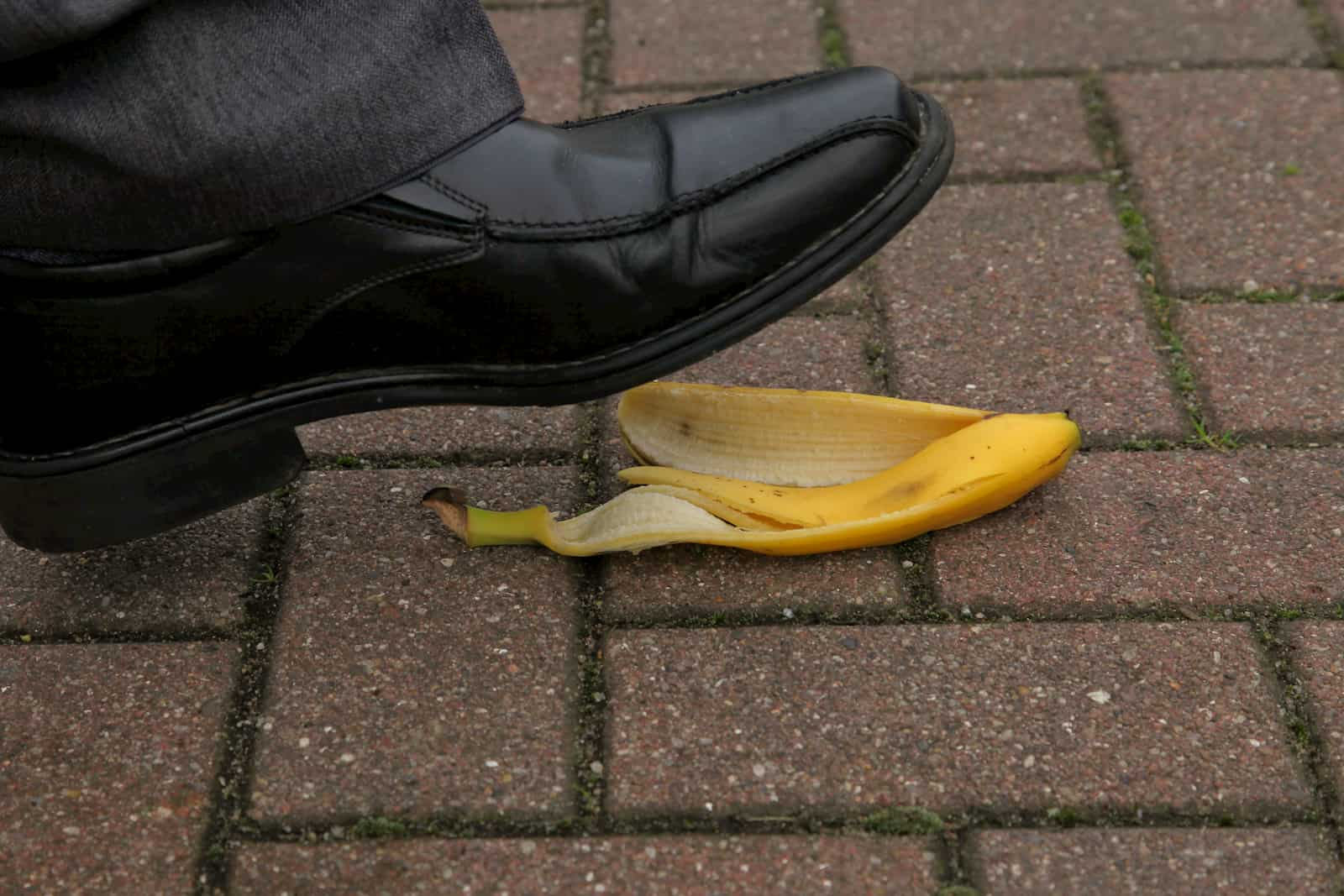What causes balance issues, and why is fall risk a problem?
May 28th, 2019 | 3 min. read

As we age, many factors can put us at risk for falling, such as our gait and various balance disorders. A gait is a persons manner of walking and can change as we get older, due to loss of flexibility mobility and muscle atrophy. The North American Med Clinic reported 40% of people 65 and older experience a fall in a given year with roughly half resulting in an injury and 10% resulting in a severe injury. Once more, injuries sustained from a fall can lead to more falls in the future.
While some causes can be age-related others can be improved to limit the risk of falling — risks such as muscle weakness, problems with one's gait, unsafe footwear, and unfamiliar environments can all be improved or mitigated.
When should I see a doctor for my fall injury?
There are numerous instances where making an appointment to see a physician, orthopedist, or sports medicine practitioner can be helpful or even advisable, to avoid further injury or harm. For example, you'd see a doctor for:
- A fracture (broken bone)
- Concussion
- Dislocations

- Tendon Ruptures
- Slipped or ruptured discs in the lower back
- Infection (if the skin over your injury site is very warm or hot, you may have one)
- Swelling that blocks blood flow (are your extremities numb?)
- Re-injury of damaged bone or tissue
- Blood clots
- If your injury causes daily pain and stiffness, inhibits your ability to participate in sports, and has not responded to non-surgical treatments.
If your injury is severe (for example, if you have a compound fracture that has broken the skin, or if you've lost consciousness), skip the doctor's office and go straight to the ER (or call 911).
How can I prevent getting injured in the future?
Injury prevention requires taking care and knowing your body and your limits. You can protect yourself by:
- Understanding your risk factors for falling. For example, there is an increased risk for falls at the age of 65, but depending on your lifestyle and medical history, the risks may be greater or lower.
- Using the right precaution. Being aware of an environment before going to bed in an unfamiliar place, leaving the bathroom light on or ensuring there is adequate light if you need to get up in the middle of the night, ensuring to take care of risks when you see them (covering cords, unfolding rugs)
- Regular activity. Don't skip steps. Increase your activity gradually, and always warm up, cool down, and stretch.
- Learning how to move your body safely. Proper form and technique can make all the difference. Many sports medicine centers and orthopedic centers now offer injury prevention clinics to help people learn correct posture and better techniques for reducing injury risk in everyday life.
Moving forward in the right direction, limiting fall risk through exercises.
There a several steps that can be taken to improve muscle strength and balance; as always if you don't feel safe following, you should see your local orthopedic doctor for an evaluation and or a referral to a specialist.
Balance Exercises:
- Wear comfortable clothes which promote mobility such as athletic clothes.
- Wear shoes which are suitable for athletic activities, provide sufficient ankle support, and a non-slip sole.
- Be sure to maintain contact with a sturdy wall and or chair as you introduce yourself to these exercises.
- As always be sure to contact your physician if you have any concerns or questions before starting any exercise.
- As you progress, you can start to walk. Starting in the standing position, place one hand against the wall to maintain a point of contact as you begin to walk. Moving forward slowly, step with your feet moving heel to toe. Look directly ahead as you walk in a straight line.
- Progressing the walk, Starting with your feet side by side and maintain a forward point of contract. Slowly step to the side with one foot, and then bring the other foot to join. Continue sidestepping for ten to 15 steps in each direction while maintaining a point of contact.
- Last but not least, Stand facing a wall with your feet shoulder-width apart maintaining two points of contact on a wall. Slowly raise one leg, and hold for a count of 10. Repeat with the other leg. Depending on your comfort level, you may try this progressing to one point of contact and eventually entirely on your own.
How should I treat a fall injury immediately after it happens?
The standard treatment in the minutes following most minor, soft tissue injuries (like sprains, strains, and minor tendon tears) is the RICE treatment: Rest, Ice, Compression, and Elevation.
- Rest the affected area for 24 to 48 hours.

- Apply an ice pack wrapped in a towel or cloth for 20 minutes three times per day. You can also alternate between ice and no ice, each for 15 minutes until the swelling subsides.
- Compress the injury with a bandage for 48 to 72 hours. This can help to reduce swelling, as long as the wrapping isn't too tight.
- Finally, stack some pillows and elevate the injury to heart level or above. Elevation aids circulation. It helps your blood travel through the injury area and back towards the heart. Elevation also reduces swelling and pain.
To manage pain and swelling, you can also take NSAIDs (over-the-counter pain relievers with anti-inflammatory properties).
If your fall injury is not minor but is an orthopedic emergency—for example, if you believe you have a fracture, a concussion, a torn muscle, or a ruptured tendon—see a doctor as soon as you can. The risks of an untreated injury can be severe.
Coastal Orthopedics is proud to offer Same day / Next day urgent appointments insurance willing. Call today and book your appointment!
Dr. Williams has been practicing orthopedic surgery in Corpus Christi since 1998. After graduating from Texas Tech hereceived his medical degree from the University of Texas at San Antonio. At the prestigious Campbell Clinic located at the University of Tennessee, Dr. Williams completed not only an Orthopedic Surgery Residency, but an additional year of Fellowship Training in Spine Surgery. Dr. Williams is dedicated to creating an excellent patient experience in the office or in the surgery suite.

